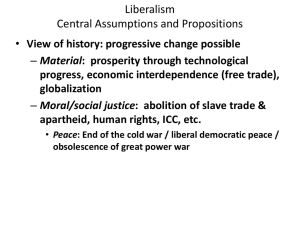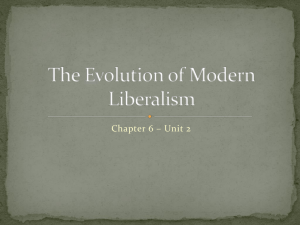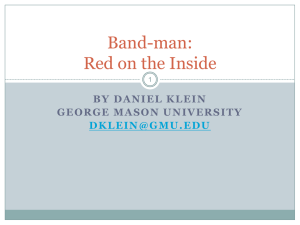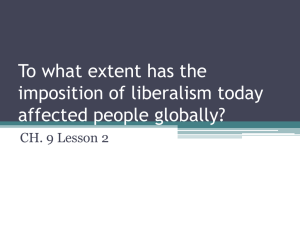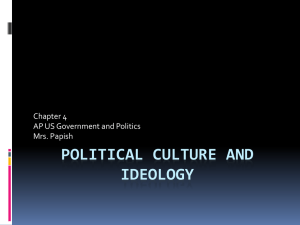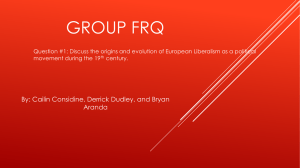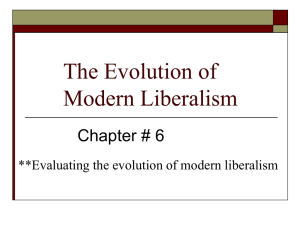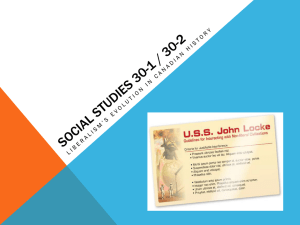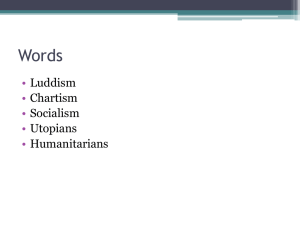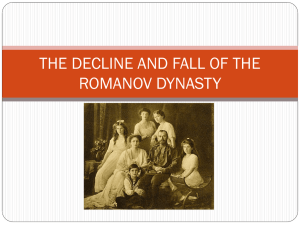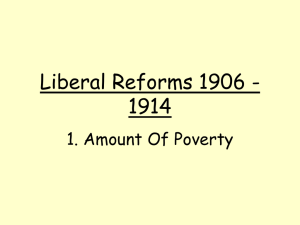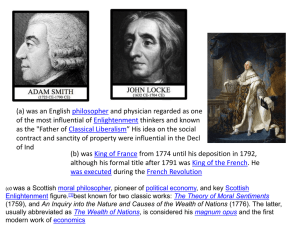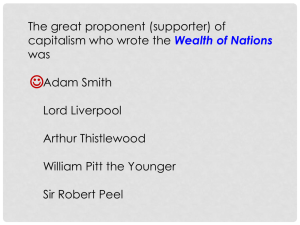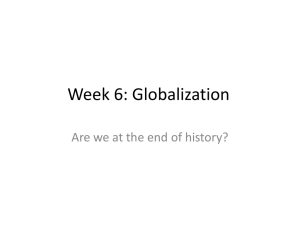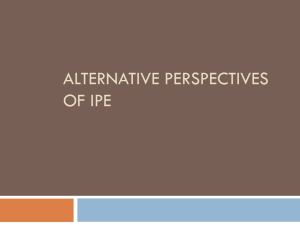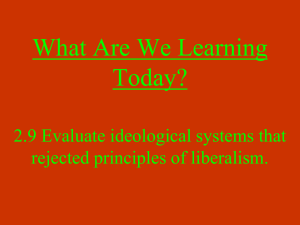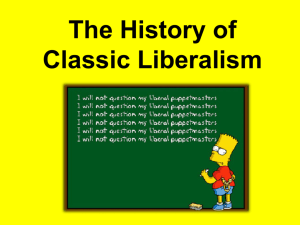CHAPTER 2 Political Theory and Political Beliefs
advertisement
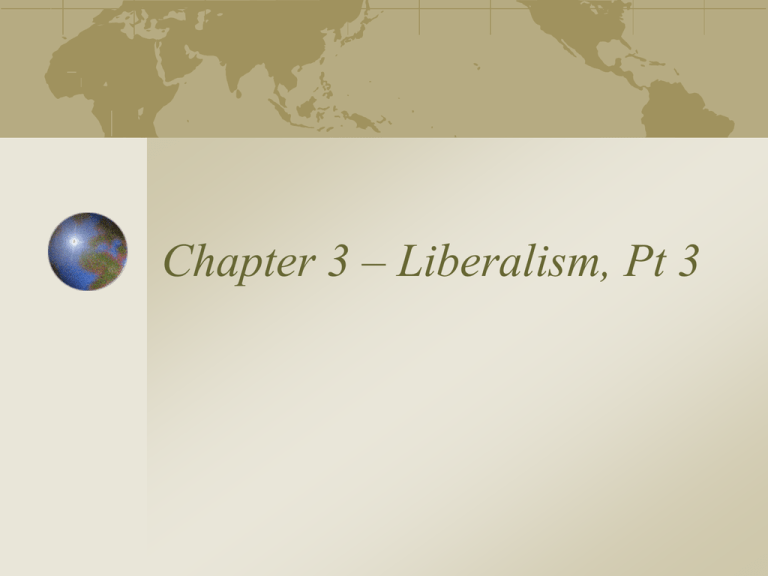
Chapter 3 – Liberalism, Pt 3 The Beginnings of Welfare Liberalism By the 1850s, classical liberalism was unable to protect workers and children from industrial exploitation and oppression Utopian Socialism and Marxist Socialism emerges to critique classical liberalism & neo-classical economics In response to the Socialist and Marxian criticisms of the mid 19th century, Liberalism begins to critique itself: immanent critique Liberalism splits into two discourses after 1880 Welfare Liberalism (New Deal Liberalism) – Theorized “positive” liberty to attempt to empower individuals to be able to triumph over obstacles such as poverty, illiteracy, and ignorance. “Neo-classical” Liberalism – Those who wished to continue the course of minimalist government and negative liberty Rejection of Social Darwinism In the late nineteenth century, William Spencer & William Grant Sumner proposed Social Darwinism (SD) A non-scientific application of evolutionary theory to social life. Tried to argue that only the most fit individuals in society should survive Charles Darwin (1809-1882), the foundational thinker for modern evolutionary biology, strongly rejected this social application of his work. Darwin believed: People are able to learn from their environment, improve, & reform their ways People can & should develop moral systems that reject “leaving a drunkard in the gutter” Neo-classical Liberalism (small state with social safety net) is a rejection of Social Darwinism Negative vs Positive Liberty Negative Liberty – Freedom from Individual freedom from governmental authority or regulations, from the Church, or from ascribed class status Positive Liberty – Freedom to Individual freedom seen in terms of capabilities. Freedom to compete successfully in job market (through education, etc.). Freedom to live a healthy life without poverty or lack of medical care. • Insurance programs, New Deal empowerment programs • Full extension of the franchise to women (1920 – 19th amendment) blacks (1965 – Voting Rights Act) Welfare Liberalism Welfare liberals argued for the importance of “nurture” over “nature” Because we are social creatures, our abilities and skills are cultivated by social institutions like schools, workers cooperatives, unions. Government can help to liberate or “create” more freedom. Welfare Liberalism Keynesians articulated a response to the excesses of laissez-faire capitalism in the Anglo-Saxon countries. Keynesians were (are) a type of welfare liberal who advanced fiscal policy as a way of managing economic cycles. On the continent, Socialism gained widespread appeal to deal with substandard working conditions, worker exploitation, and economic depression. Liberalism In popular discourse, “liberal” tends to refer to liberalism on the left after 1932 Post World War II liberalism: Civil Rights • Positive Liberty • Left Liberal Movement The New Left (Students for a Democratic Society) • Positive Liberty • Left Liberal Movement • Argued for active, participatory democracy John Rawls and the Liberal Tradition A Theory of Justice, 1971 A philosophical defense of the welfare state: how can we maintain liberty while still providing for the maximization of everyone’s well-being, including society’s worst-off members? If unequal distribution of resources and wealth can be shown to increase everyone’s well-being, we can philosophically tolerate inequalities of wealth. This is a philosophical refutation of socialism and communism A philosophical defense of liberalism, welfare liberalism. The Response from the Right: Neoclassical Liberalism Nozick, Hayek, and Friedman were twentieth century classical liberals who felt that redistribution of wealth through taxes or subsidies reduced incentives People would not be motivated to take risks and create wealth if the advantages to risk taking were minimized by high taxes – or by subsidies to less successful ventures. Thatcher and Reagan advanced this system of classical (or neo-classical) liberalism in the 1980s as a result of economic stagflation in the 1970s. Libertarianism After 1980, many supporters of Reagan and Thatcher (and by extension Hayek, Nozick, and Friedman) call themselves civil-libertarians. React to what they perceive as the excesses of welfare liberalism Liberalism after 1992 The Third Way: By 1996, the Democratic Party and the Labour Party jettisoned much of their welfare liberalism and moved to a compromise with modern conservatism (neo-classical liberalism). Since the mid 1990s, an uneasy third way consensus has been achieved – between welfare liberals and classical liberals.

